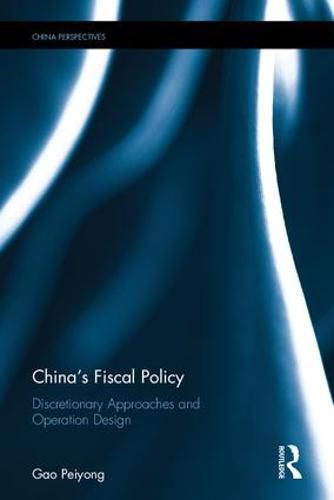Readings Newsletter
Become a Readings Member to make your shopping experience even easier.
Sign in or sign up for free!
You’re not far away from qualifying for FREE standard shipping within Australia
You’ve qualified for FREE standard shipping within Australia
The cart is loading…






As an important macroeconomic variant, the fiscal revenue and expenditure can influence the operation of the whole economic and social activities by changing the existing GDP distribution pattern, affecting the consumption and investment of enterprises and people, etc. Thus, fiscal policy has always been a primary instrument of macroeconomic regulation.
This book imports fiscal policy into the framework of macroeconomic analysis and through the analysis of the former, it unfolds the major changes of China’s macroeconomic operation in the past 20 years. This book begins with China’s rejoining the General Agreement on Tariffs and Trade (GATT) in the 1990s which enabled China to deepen the reform and join the international market finally. It elaborates on the challenges China’s taxation would be confronted with after rejoining the GATT, including the decrease of tax revenue and higher requirements for tax reform. Then this book combs China’s fiscal policies under various economic situations chronologically-tax policy under the background of deflation, proactive fiscal policy at the beginning of 21st century, macroeconomic policy options facing a complicated and volatile economy, etc. How to deal with the ! Degreesnew normal!+/- of development China’s economy has entered is also addressed.
This book will appeal to scholars and students of economics and China’s economic studies.
$9.00 standard shipping within Australia
FREE standard shipping within Australia for orders over $100.00
Express & International shipping calculated at checkout
As an important macroeconomic variant, the fiscal revenue and expenditure can influence the operation of the whole economic and social activities by changing the existing GDP distribution pattern, affecting the consumption and investment of enterprises and people, etc. Thus, fiscal policy has always been a primary instrument of macroeconomic regulation.
This book imports fiscal policy into the framework of macroeconomic analysis and through the analysis of the former, it unfolds the major changes of China’s macroeconomic operation in the past 20 years. This book begins with China’s rejoining the General Agreement on Tariffs and Trade (GATT) in the 1990s which enabled China to deepen the reform and join the international market finally. It elaborates on the challenges China’s taxation would be confronted with after rejoining the GATT, including the decrease of tax revenue and higher requirements for tax reform. Then this book combs China’s fiscal policies under various economic situations chronologically-tax policy under the background of deflation, proactive fiscal policy at the beginning of 21st century, macroeconomic policy options facing a complicated and volatile economy, etc. How to deal with the ! Degreesnew normal!+/- of development China’s economy has entered is also addressed.
This book will appeal to scholars and students of economics and China’s economic studies.